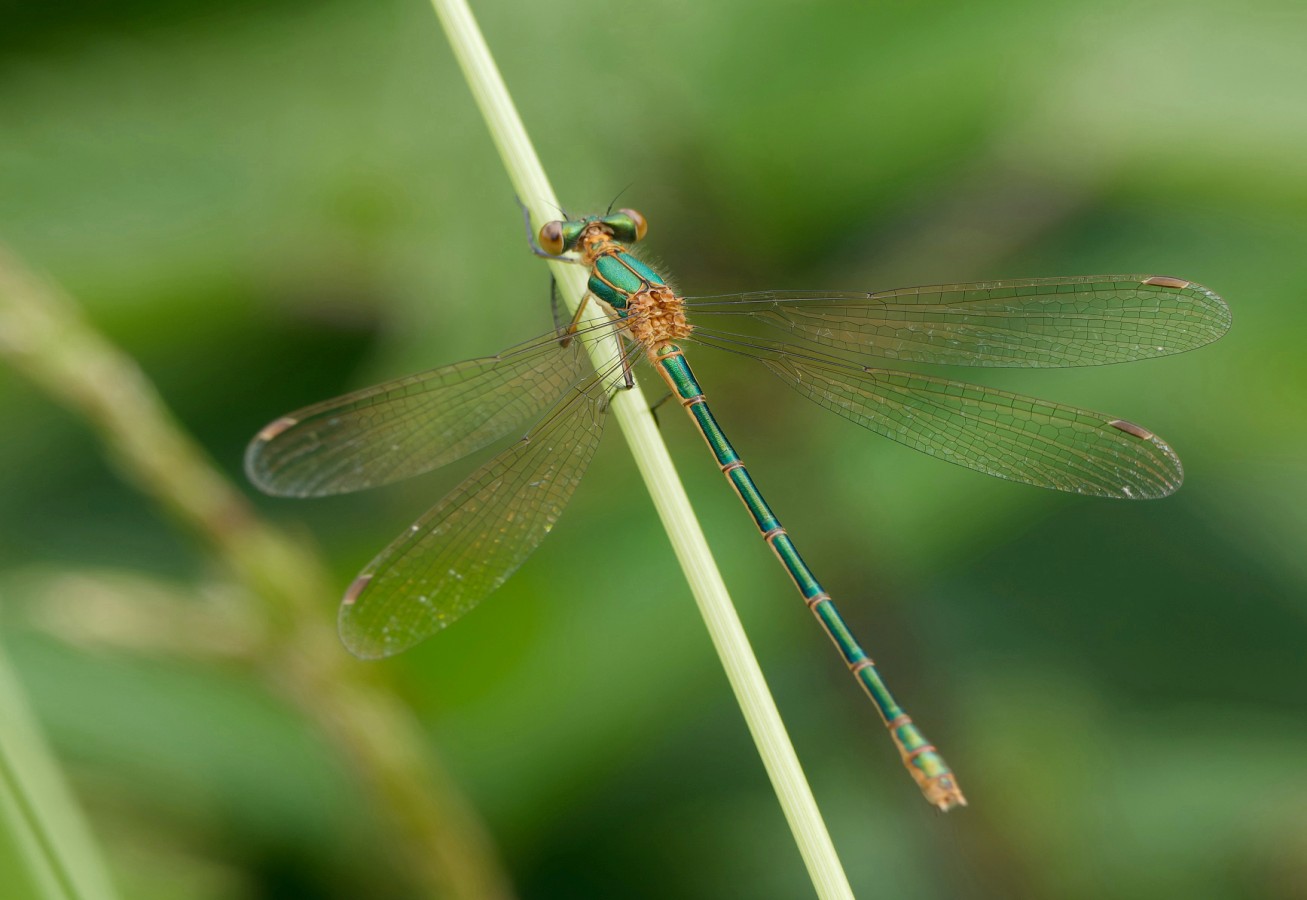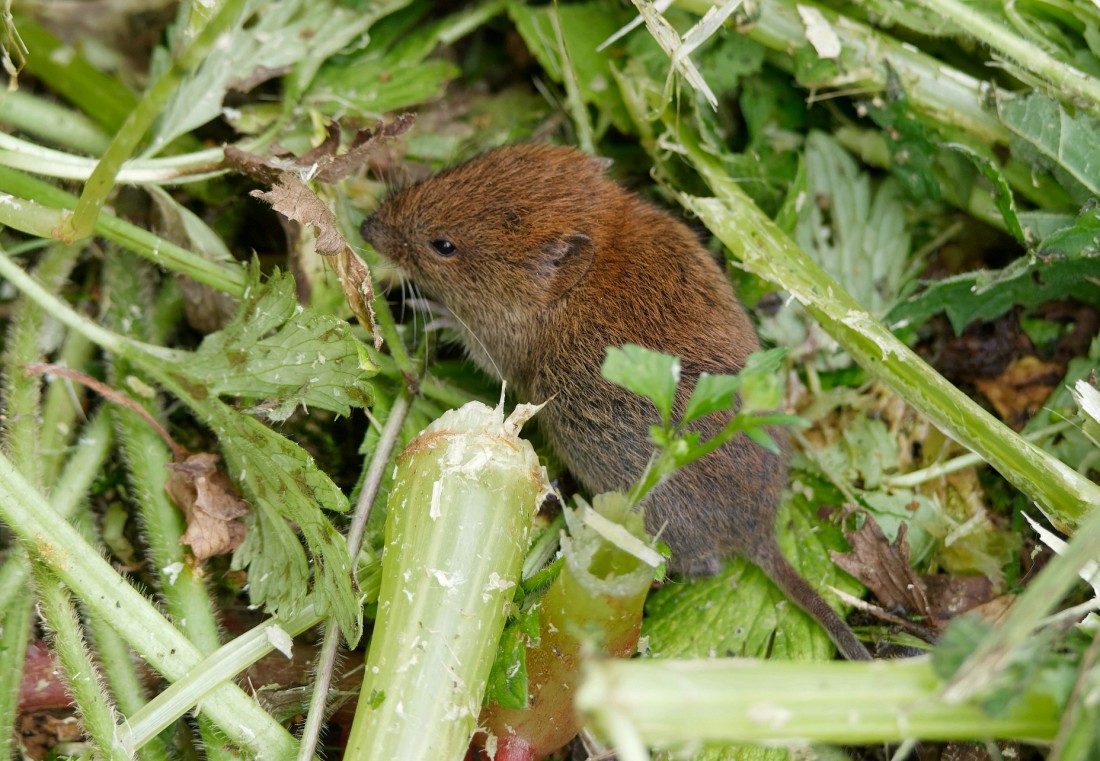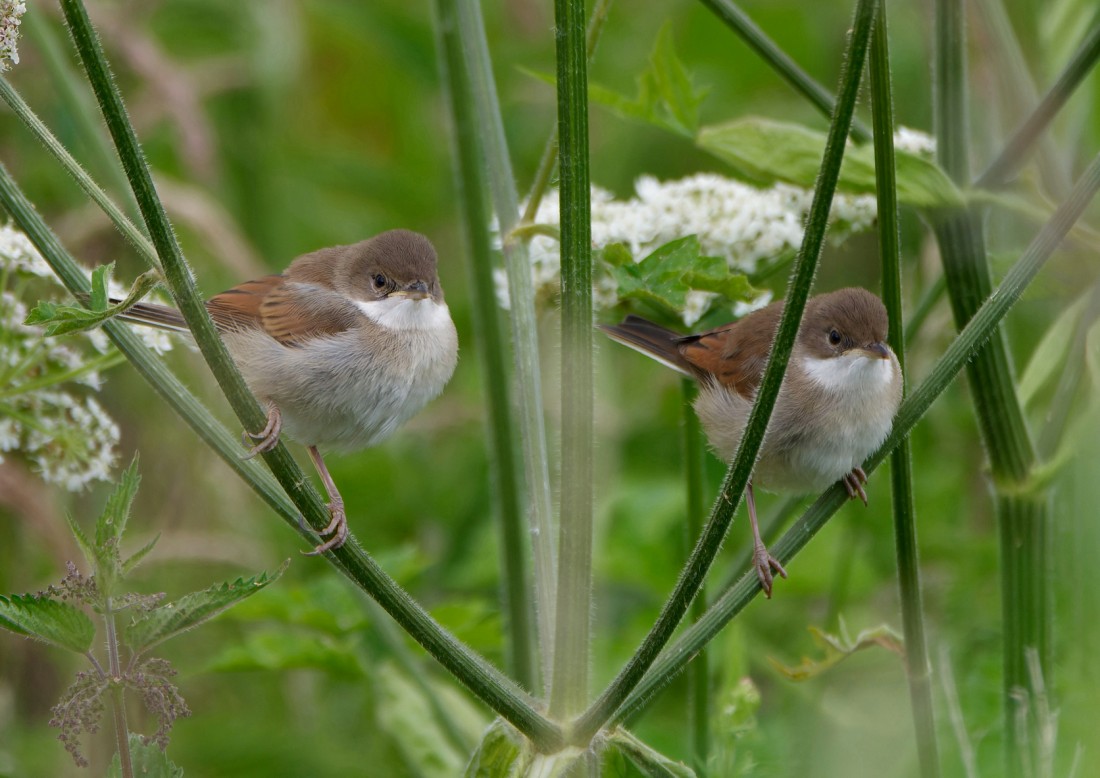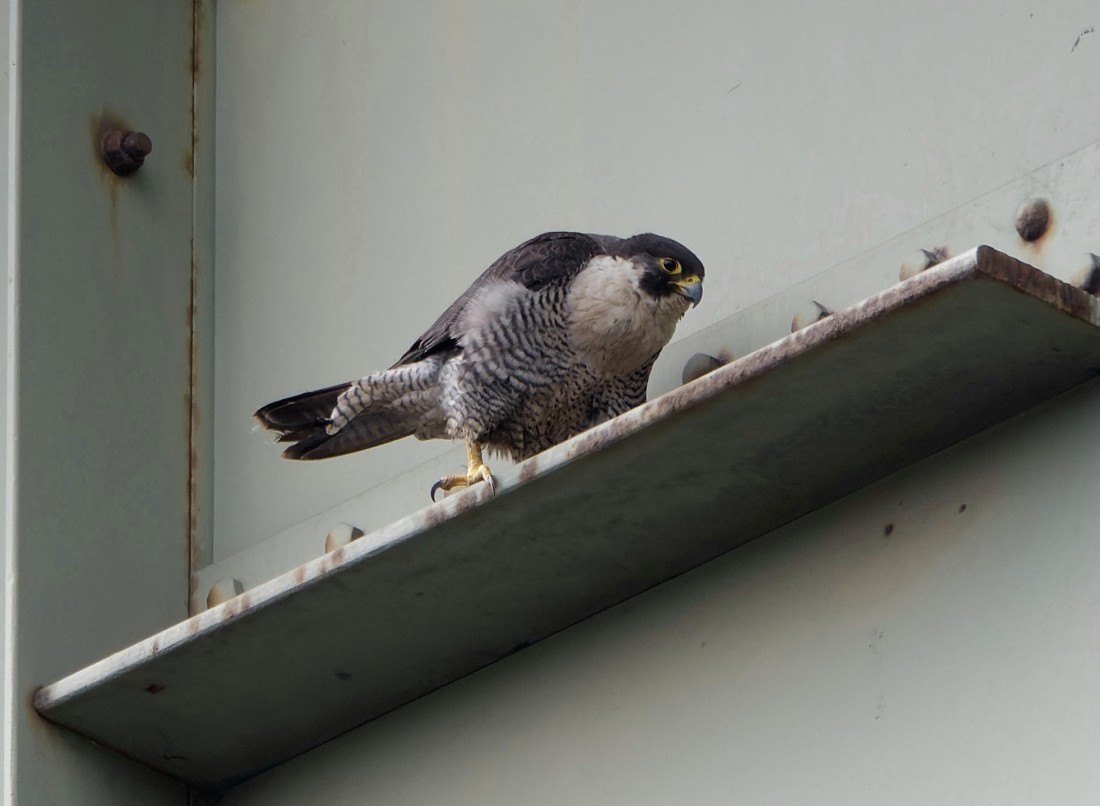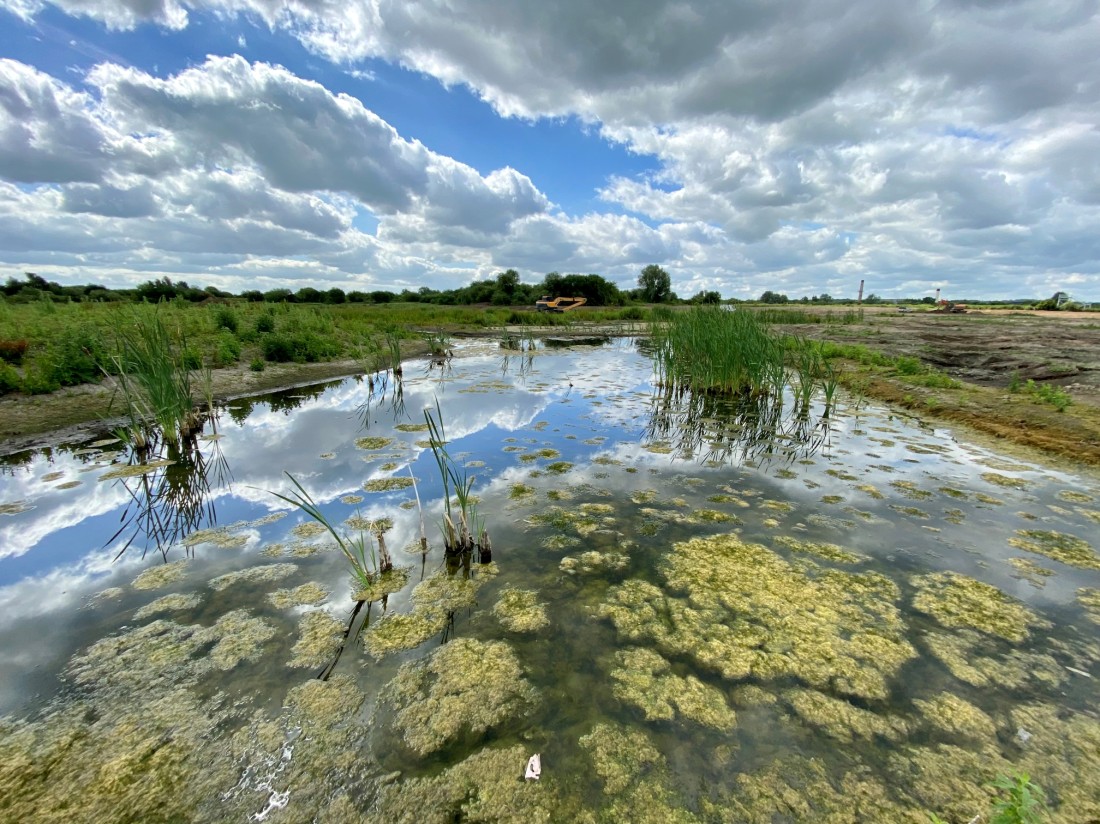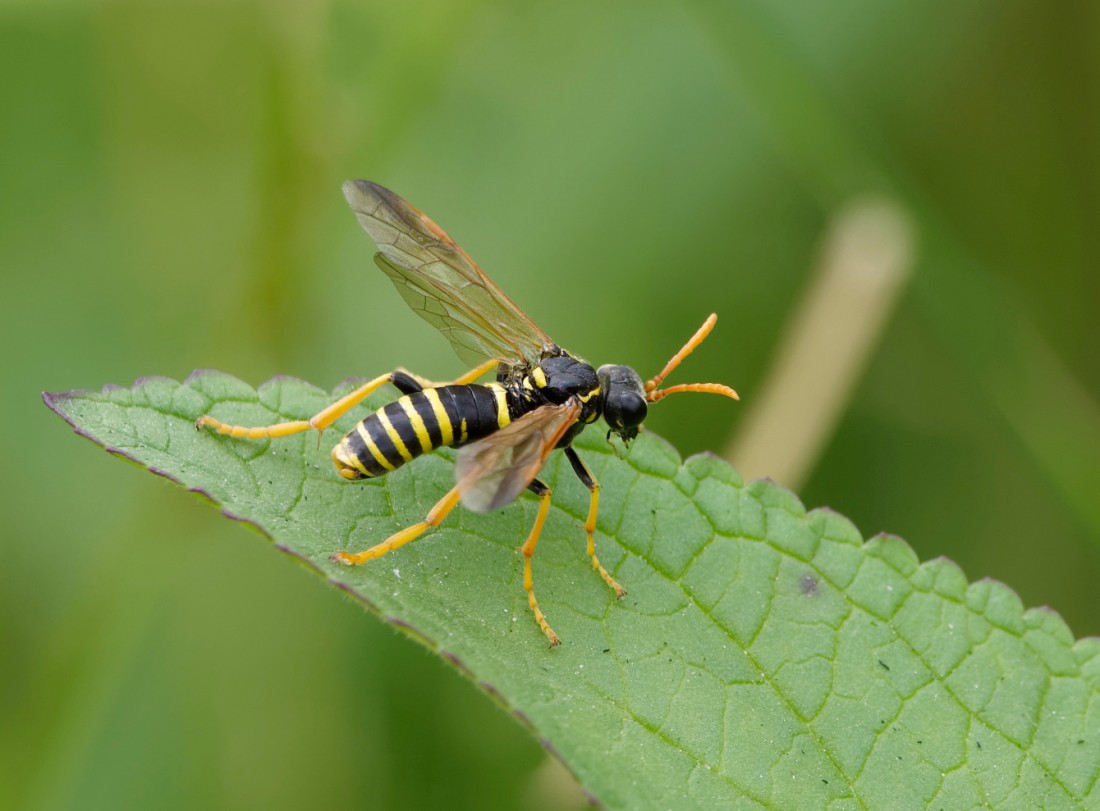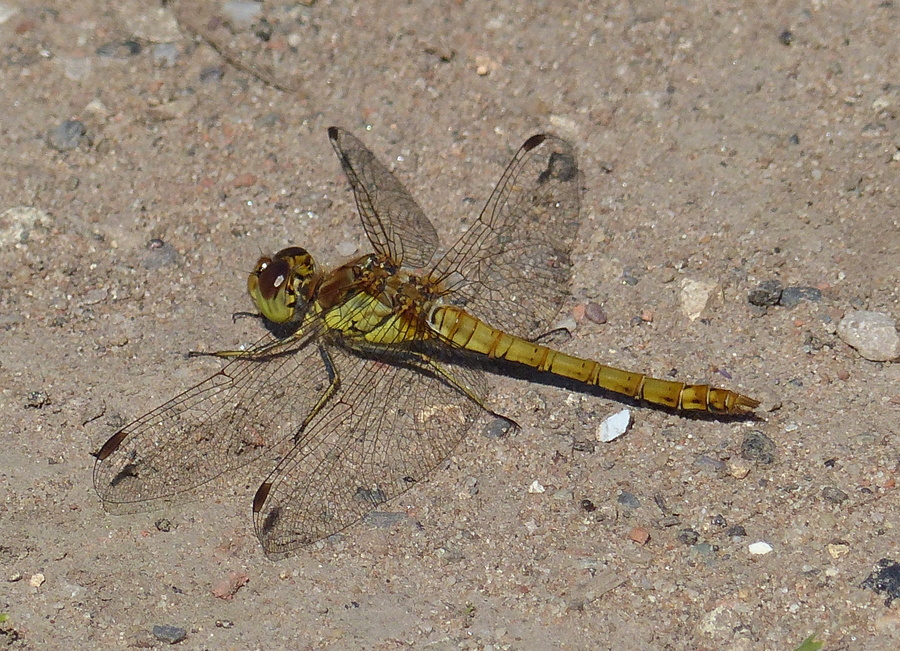Woolston Eyes Monthly Sightings
2022-06-30
An early start on No.3 bed at saw two early-returning Ruff circling the bed before heading off to the west. It was a wander round Nos.3 and 4 beds, where the numbers of Gadwall and Coot continue to grow. Between the two beds we counted 470 Gadwall and 260 Coot while, inevitably at this time of year, Black-necked Grebe numbers are heading in the other direction, with just 4 adults and 11 young located. Marsh Harrier, Kingfisher and Willow Tit were also noted on No.3 bed. Butterflies and dragonflies were much in evidence in the warm sunshine and counts included our first 2 Gatekeepers of the year on No.4 bed, along with 1 Emerald Damselfly, 2 Common Darters and 15 Black-tailed Skimmers on the same bed, while at least five Brown Hawkers were actively hunting on No.3 bed. Photo of an Emerald Damselfly Cheers David (with Dan Owen, Gina Dunbar and Charlie Dunbar)
Submitted by: David Bowman
2022-06-28
This morning 160 adult Black-headed Gulls and 65 juveniles were on the No.4 bed wetland, with just a handful left in No.3 bed, but at least they haven’t left yet, just relocated! The departure from No.3 bed of our breeding adult Black-necked Grebes continues apace. Of the minimum of 34 adults which arrived and bred, we could only locate 4 this morning, though there is still a chance that some females are on nests, trying for second broods. Though 18 mostly fully-grown young are still present, many of these were massing together and indulging in low, practice flights across the water, a sure sign that they too will be leaving soon. To add to the sense of summer passing, 4 southbound Green Sandpipers were on No.4 bed and we were privileged to watch 3 of the 5 Little Ringed Plovers on the same bed suddenly start calling, before rising and climbing away, high to the south, no doubt headed for their African wintering grounds. To cap a really interesting morning, a wandering Red Kite drifted over before continuing to soar away to the west. Photo of a Bank Vole Cheers David Bowman (with Dan Owen)
Submitted by: David Bowman
2022-06-25
Butterfly totals for the whole reserve this week; 61 meadow brown, 24 speckled wood,11 small white, 10 small tortoiseshell, 9 red admiral, 7 comma, 6 common blue, 5 small skipper, 2 large skipper, 1 painted lady, 1 ringlet.
Submitted by: Dave Hackett
2022-06-25
It was a cooler morning, though still sunny, at Woolston Eyes. We started with wildfowl counts on Nos.3 and 4 beds, where numbers of Gadwall and Coot continue to build, with 425 of the former and 217 of the latter. It may be that some of our Black-necked Grebes have now headed off to their wintering grounds, with just 17 located, 12 juveniles and 5 adults. With so many wildfowl, on No.3 bed particularly, it was no surprise to turn up something interesting, with two Garganey emerging at the back of the bed before the female drifted in front of the Morgan Hide. The presence of so much potential prey inevitably attracts predators and two Marsh Harriers were actively hunting before a large Mink swam past the hide carrying a partly eaten Swan’s egg. This was followed by a Lesser Black-backed Gull, which landed on the Morgan Hide scrape, also carrying a Swan’s egg, much to the consternation of the Black-headed Gulls.
Photo of juvenile Whitethroats
Cheers David Bowman (with Dan Owen, Helen Wynn, Brian Baird and Dave Steel)
Submitted by: David Bowman
2022-06-21
On No.4 bed 40 Swifts and a handful of Swallows, House Martins and Sand Martins were hawking for insects, while 60 Gadwall, 55 Coot, 17 Shoveler plus a few Little Grebes, Pochard and Tufted Ducks were out on the water. As the water level drops, due to the continuously dry weather, numbers of fish become more concentrated and four Grey Herons and a Kingfisher were taking advantage on the Loop of the bed. Then it was into No.3 bed where 44 Black-necked Grebes are still present (including 29 young) and 62 large young Black-headed Gulls were raucously demanding food from increasingly disinterested parents. The arrival of the regular female Marsh Harrier then flushed more than 200 Gadwall from cover, along with the odd Wigeon, Teal and Shoveler. Late morning the focus shifted to smaller stuff and species of note included 26 Red-eyed Damselflies under the footbridge, a single Emerald Damselfly and a smart Black and Yellow Long-horned Beetle. Photo of the Long-horned Beetle Cheers David Bowman (with Daniel Owen)
Submitted by: David Bowman
2022-06-18
The breeding season for Black-necked Grebes goes from strength to strength, with another pair now feeding one small young on No.3 bed. This takes the number of broods to 18, with a minimum of 39 young hatched, of which 26 were still present this morning, along with 28 adults. Pochard are doing well, too, with at least 13 broods so far and we are expecting to see our first Tufted Duck broods any day now. We spent the early part of the day on No.4 bed, where the first suggestion of an early return passage of waders (which usually involves failed breeders) came with the arrival of a Common Sandpiper. The habitat on the new No.4 bed wetland looks ideal for waders at the moment and we’re hopeful of our best wader passage for many years, as we move steadily towards late summer/autumn. Raptors are ever present at this time of year, with highlights of a Hobby stooping through 60 Swifts on No.4 bed, 2 Marsh Harriers on No.3 bed and a Peregrine guarding the usual Viaduct nest-site on No.1 bed. Photo of the Preregrine Cheers David Bowman (with Daniel Owen, Helen Wynn, Dave Steel, Brian Baird, Danny Gornall, Brain Martin and Andy Harmer)
Submitted by: David Bowman
2022-06-16
On the hottest day of the summer so far, Daniel Owen and I again concentrated on keeping track of of our breeding Black-necked Grebes and other water-birds. By the end of the morning we’d located 51 grebes - 26 adults and 25 young. While we have had the occasional year when a few pairs of Black-necked Grebe have managed to produce second broods, we’ve never had so many pairs all behaving as if they intend to try for more young. No doubt the warm, dry spring and early summer weather has been a c0ntributory factor, so fingers crossed that it continues. The volume of water-birds present on both Nos.3 and 4 beds remains impressive, with counts of 281 Gadwall and 181 Coot to the forefront. Other sightings of note included a hunting Hobby, 2 Marsh Harriers, a singing Lesser Whitethroat and 3 Willow Tits. It was also good to add Kingfisher to the list of birds which has now been seen on the new No.4 bed wetland. Photo of a Large Skipper Cheers David Bowman
Submitted by: David Bowman
2022-06-14
On a warm, slightly humid early summer morning, Dan Owen and I concentrated on counting the breeding water-birds on No.3 and 4 beds. We managed to find 38 Black-necked Grebes, split evenly between adults and well-grown young. Interestingly, two pairs of Black-necked Grebes were displaying, suggesting that we might be treated to some second broods, which is rare. In addition, five new broods of Pochard, two of Little Grebe and one of Shelduck also appeared, with the lagoons on both beds just thronging with birds, including an excellent 155 Coot. There were plenty of butterflies and dragonflies on the wing, too, with the pick being a nice fresh Painted Lady and a Large Skipper on No.4 bed, with another of the latter on No.3 bed.
Photo of the East Cell of the No.4 bed Wetland
Cheers David Bowman
Submitted by: David Bowman
2022-06-11
It’s pleasing to report that a 17th brood of Black-necked Grebes has recently emerged on No.3 bed. This is our second highest ever total, with at least 34 adults and 38 young making for an outstanding breeding season. Although some of the adults and fully-grown young have already started to leave No.3 bed, we still managed to locate 18 young and a similar number of adults. Other sightings of note included male and female Marsh Harriers on No.3 bed and Peregrine and Yellowhammer on No.1 bed. We spent the latter part of the morning conducting an insect/dragonfly survey of No.1 bed, with 3 Emperor Dragonflies and 5 Four-spotted Chasers among the latter and a good number of insects photographed for later identification. Photo of a Figwort Sawfly Cheers David Bowman (with Brian Martin, Daniel Owen, Helen Wynn, Sue Haddock, Brian Baird and Sean Hennessy)
Submitted by: David Bowman
2022-06-10
A sunny morning and I was hopeful of seeing my first meadow browns of the year. I was not disappointed and found 6 at the eastern end of the reserve. Other butterflies of note were 9 common blue, a large skipper and a painted lady. The northern section of No.1 bed held 2 little ringed plover, 2 lapwing and 4 meadow pipit. A common tern was on the canal and a permit holder reported a water rail with 5 young at the Frank Linley Hide. Perhaps the most surprising sighting was of 5 broods of gadwall on No.2 bed with a minimum of 36 young.
Submitted by: Dave Hackett

